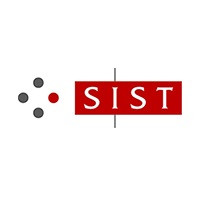This European Standard provides the methodology for measuring and characterizing the dustiness of bulk materials that contain or release nano-objects or submicrometer particles, under standard and reproducible conditions and specifies for that purpose the vortex shaker method. In addition, this European Standard specifies the selection of instruments and devices and the procedures for calculating and presenting the results. It also gives guidelines on the evaluation and reporting of the data. The methodology described in this European Standard enables a) the measurement of the respirable dustiness mass fraction, b) the determination of the mass-based dustiness index of respirable particles in the size range from about 10 nm to 1 000 nm; c) the determination of the number-based dustiness index of respirable particles in the size range from about 10 nm to 1 000 nm; d) the determination of the number-based emission rate of respirable particles in the size range from about 10 nm to 1 000 nm; e) the determination of the number size distribution of the released respirable aerosol in the size range from about 10 nm to 10 µm; f) the collection of released airborne particles in the respirable fraction for subsequent observations and analysis by electron microscopy. This European Standard is applicable to the testing of a wide range of bulk materials including nanomaterials in powder form. NOTE 1 With slightly different configurations of the method specified in this European Standard, dustiness of a series of carbon nanotubes has been investigated ([5] to 10]). On the basis of this published work, it can be assumed that the vortex shaker method is also applicable to nanofibres and nanoplates. This European Standard is not applicable to millimetre-sized granules or pellets containing nano-objects in either unbound, bound uncoated and coated forms. NOTE 2 This comes from the configuration of the vortex shaker apparatus and the small test sample required. Eventually, if future work provides accurate and repeatable data demonstrating that this is possible, the intention is to revise the European Standard and to introduce this application. NOTE 3 As observed in the pre-normative research Project [4], the vortex shaker method specified in this European Standard provides a more energetic aerosolization than the rotating drum, the continuous drop and the small rotating drum specified in prEN 17199-2:2018 [1], prEN 17199-3:2018 [2] and prEN 17199-4:2018 [3], respectively. It can better simulate high energy dust dispersion operations or processes where vibration is applied or even describe a worst case scenario in a workplace, including the (non-recommended) practice of cleaning contaminated worker coveralls and dry work surfaces with compressed air. NOTE 4 Currently no classification scheme in terms of dustiness indices or emission rates has been established according to te vortex shaker method. Eventually, when a large number of measurement data has been obtained, the intention is to revise the European Standard and to introduce such a classification scheme, if applicable.



